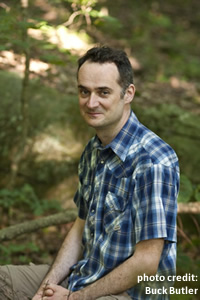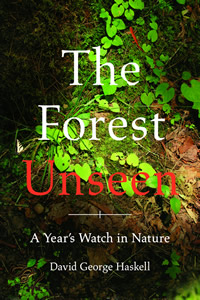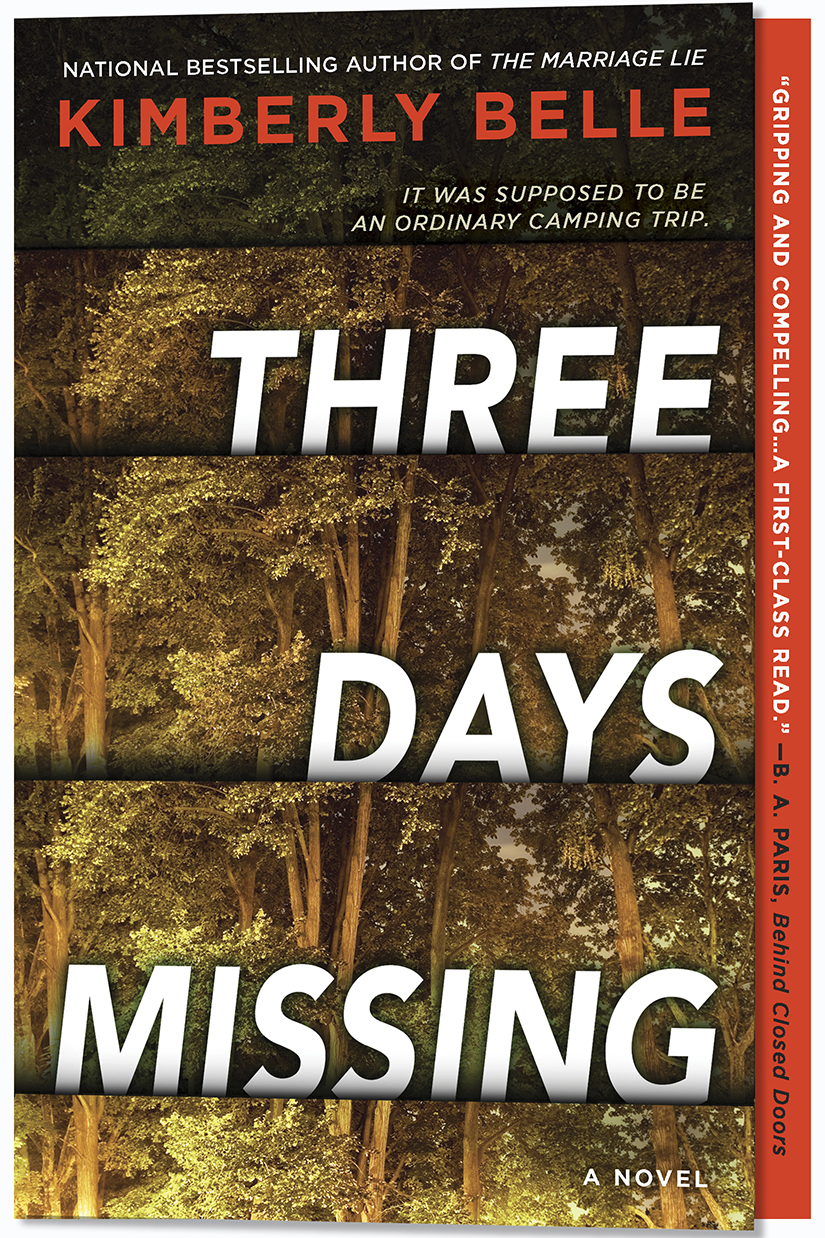Upon a Hill in Tennessee
David George Haskell’s stunning meditation on a patch of old-growth forest gives insight into all of nature
A mandala is a circle-shaped “painting” composed entirely of colored sand; it is made by Tibetan monks to recreate the path of life while serving as a focal point for meditation. When David George Haskell, a professor of biology at the University of the South in Sewanee, was choosing a study area for his own research, he found an ideal patch of old-growth forest, preserved from the ax by the steepness of its slope, near the edge of the Cumberland Plateau. He conceived of his research area as a mandala, an imagined circle just over a meter in diameter, and he spent a year closely watching the nature within it: insects, grubs, salamanders, parasitic worms, birds, squirrels, deer, coyotes, mosses, fungi, herbs, flowers, trees, and many life forms. From these observations, and from his research on each living thing he observed, Haskell drew conclusions not only about the health of Tennessee forests but also about the slow march of evolution, the interconnectedness of all things, and the human role within the dance of life on Earth.
Haskell recounts these conclusions, one mandala visit at a time, in his new book, The Forest Unseen: A Year’s Watch in Nature. Rising to the philosophical heights of Annie Dillard’s A Pilgrim at Tinker Creek and Thoreau’s Walden, both of which were also structured around a meditative sojourn within a specific wilderness, Haskell’s book is far more than the sum of its parts. It is The Voyage of the Beagle rendered small-scale but with no less significant observations than those made by Darwin in the Galapagos.
 From the first chapter, which describes fungi, lichen, and bacteria in the mandala, Haskell begins to develop his theme of the interconnectedness of life, of the foolishness of considering a single species or a single habitat when trying to make sense of nature. “Relationships in the mandala come in multifarious, blended hues,” he writes. “The line between bandit and honest citizen is not as easily drawn as it first seems. Indeed, evolution has drawn no line. All life melds plunder and solidarity.”
From the first chapter, which describes fungi, lichen, and bacteria in the mandala, Haskell begins to develop his theme of the interconnectedness of life, of the foolishness of considering a single species or a single habitat when trying to make sense of nature. “Relationships in the mandala come in multifarious, blended hues,” he writes. “The line between bandit and honest citizen is not as easily drawn as it first seems. Indeed, evolution has drawn no line. All life melds plunder and solidarity.”
In exploring the relationships he observes through the lens of a bit of Cumberland Plateau, Haskell often refers to history, both human and geologic. In discussing the way in which North America’s large herbivores—the mastodon, the giant musk-ox, and so on—vanished during the same time as humans arrived, he refers first to Darwin (the American continent, Darwin wrote, “must have swarmed with great monsters; now we find mere pygmies compared to the antecedent, allied races,”) and then turns immediately to Jefferson: “Thomas Jefferson disagreed, believing that giant sloths and other creatures must still be alive. After all, why would God create them, then kill them off? Creation reflected God’s perfect handiwork, therefore nature would unravel if pieces were to fall away. Jefferson instructed the explorers Lewis and Clark to bring back reports of these creatures from their trek to the Pacific Coast. The expedition found no evidence of living mastodons, sloths, or any other extinct creatures. Darwin was right; pieces of creation can be destroyed.”
 Haskell quotes no external source, whether Darwin, Jefferson, or a recent gene study, without tying that source to the study area as he observes it. He follows up the passage on Darwin and Jefferson, for example, by describing plants within his mandala that evolved to rely on giant herbivores for seed-dispersal. Those animals have vanished, but the plants have not yet had enough time to evolve new schemes for spreading their offspring. The honey locust, Haskell notes, is “doubly lost”: first because its two-foot-long seedpods grow at a height that was perfect for browsing mastodons but is now too great for any living animal to reach, and second because the pods are too large for any surviving species to swallow, although they are the perfect size for large extinct mammals.
Haskell quotes no external source, whether Darwin, Jefferson, or a recent gene study, without tying that source to the study area as he observes it. He follows up the passage on Darwin and Jefferson, for example, by describing plants within his mandala that evolved to rely on giant herbivores for seed-dispersal. Those animals have vanished, but the plants have not yet had enough time to evolve new schemes for spreading their offspring. The honey locust, Haskell notes, is “doubly lost”: first because its two-foot-long seedpods grow at a height that was perfect for browsing mastodons but is now too great for any living animal to reach, and second because the pods are too large for any surviving species to swallow, although they are the perfect size for large extinct mammals.
The sentences in The Forest Unseen are beautifully crafted, and Haskell never interrupts the narrative with footnotes or other citations, although he does include an appendix that offers a detailed scientific bibliography for each chapter. If there is anything to fault in his writing, it is his frequent repetition of the word “mandala,” which appears at least once on most of the book’s pages. Still, the writing otherwise is so wonderful that he can be forgiven an overreliance on his central conceit. Over and over again in this book, the reader will find sentences worthy of being inscribed over the entrances to biology buildings in the nation’s universities.
Taken as a whole, each chapter of The Forest Unseen offers a calm, clear, intelligent confirmation that every cell of every living thing testifies to the theory of evolution as well-established fact, no less mysterious and wonderful in its complexity than that of any ancient creation myth. Each chapter also reinforces the inescapable role of human beings, for better or worse, in the ongoing evolution of life.
[This review originally appeared on April 13, 2012.]
David Haskell will discuss The Forest Unseen at the twenty-fourth annual Southern Festival of Books, held October 12-14 at Legislative Plaza in Nashville. All events are free and open to the public.


